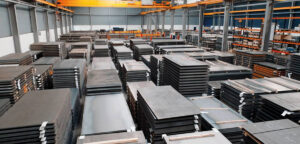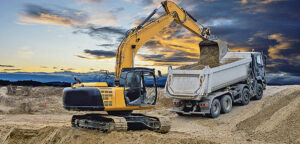
Startseite » News » Delivery states of steel and their significance

The choice of delivery condition has a direct influence on the mechanical and chemical properties of steel. The right combination of chemistry, deformation (rolling) and heat treatment ensures that the optimum values are achieved. Each steel grade has specific requirements that are defined in the standard or data sheet.
Products in the +AR delivery condition are manufactured without any specific influence on rolling temperatures or heat treatments. The material designation of these products ends with the abbreviation +AR.
For grades according to Euronorm, both delivery states are given the suffix +N.
Steel grades such as S235JR or S355J2 can be produced in the +AR, +N or +NR delivery condition. The additions to the material designation are +AR and +N. Whereby +N also includes normalizing rolling (+NR).
For this delivery condition, the sheets are normalized in the furnace (890-950°C), then slowly cooled and tempered, i.e. heated at 550-750°C in the furnace. This condition applies to EN 10028 grades such as 13CrMo4-5 and 10CrMo9-10.
The sheet metal is cooled with an air blower or by “dripping water”. This process is faster than cooling in still air, but slower than quenching.
This condition requires a high degree of non-metallic purity of the molten steel with a low carbon content, as well as a low proportion of interfering elements such as phosphorus, sulphur, nitrogen and boron.
To achieve this, the steel is desulphurized as pig iron and later subjected to a special vacuum treatment in secondary metallurgy.
This is followed by thermomechanical rolling (TM):
Find out more about the different delivery states and how you can optimize your application! Please contact us for detailed advice and technical information.



Pressure vessel steel grades are special steel grades that are designed for the manufacture of containers that must withstand high pressure and temperature loads and